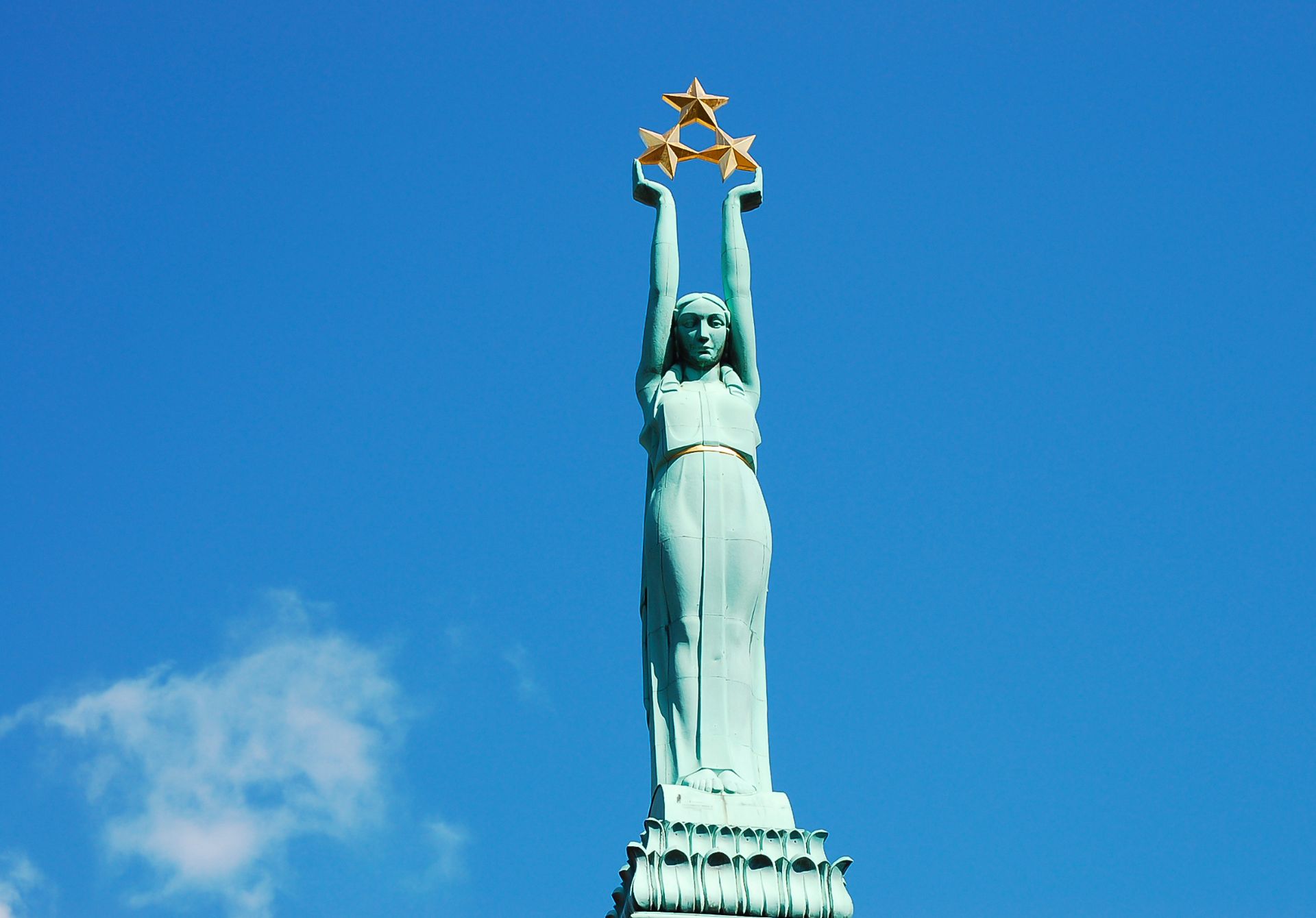Nestled in the heart of Riga, Latvia’s capital city, stands a striking 42-meter tall monument that has become synonymous with the nation’s struggle for independence and its enduring spirit. The Freedom Monument, known locally as “Milda,” is more than just a tourist attraction—it’s a powerful symbol of Latvia’s history, resilience, and national identity.
A Brief History: From Dream to Reality
The idea for the Freedom Monument was born in the 1920s, shortly after Latvia gained independence from the Russian Empire. Latvian sculptor Kārlis Zāle won the design competition in 1922, but it wasn’t until 1935 that the monument was finally completed and unveiled.
Interestingly, the monument survived both Nazi and Soviet occupations, though its symbolism was reinterpreted during these periods. Today, it stands as a testament to Latvia’s unwavering desire for freedom and self-determination.
Architectural Marvel: Decoding the Symbolism
The Freedom Monument is a masterpiece of symbolism, with each element carefully chosen to represent aspects of Latvian history and culture:
- The base features 13 sculptures representing various historical events and cultural values.
- Four sets of sculptures on the column depict concepts like work, spiritual strength, family, and defenders of the fatherland.
- At the top, a copper figure of Liberty holds three golden stars, representing the three historical regions of Latvia: Kurzeme, Vidzeme, and Latgale.
For architecture enthusiasts, the monument’s mix of classical and modern elements makes it a unique study in early 20th-century design.
Visitor Experience: What to Expect
As a concierge or tour guide, here’s what you need to know about visiting the Freedom Monument:
- Location: It’s centrally located on Brīvības bulvāris, easily accessible from most parts of Riga.
- Opening Hours: The monument is viewable 24/7, but the honor guard is present from 9 AM to 6 PM daily.
- Best Time to Visit: Early morning or late afternoon for the best lighting and fewer crowds.
- Nearby Attractions: The monument is close to the Old Town, National Opera, and several parks, making it easy to incorporate into a day of sightseeing.
Beyond the Monument: Cultural Significance
The Freedom Monument isn’t just a static piece of architecture—it’s a living part of Latvian culture. Throughout the year, it serves as a focal point for various national celebrations and commemorations:
- Independence Day (November 18): Thousands gather for a solemn ceremony and spectacular fireworks display.
- Remembrance Day (June 14): A day to honor victims of Soviet deportations, with flowers placed at the monument’s base.
- Song and Dance Festival (every five years): The monument is a key stop during the festival’s grand procession.
For tourists seeking authentic cultural experiences, timing a visit to coincide with one of these events can provide unforgettable insights into Latvian national identity.
Insider Tips for an Enriched Visit
To help your clients or tour group get the most out of their visit to the Freedom Monument, consider these insider tips:
- Time your visit to coincide with the changing of the honor guard, which occurs on the hour.
- Recommend a guided tour that includes the nearby Occupation Museum for a deeper understanding of Latvia’s struggle for independence.
- Suggest visiting at night when the monument is beautifully illuminated, offering a different perspective and great photo opportunities.
- Encourage visitors to explore the surrounding Bastion Hill park, especially in spring when the flower gardens are in full bloom.
The Freedom Monument in Numbers
For the data-driven traveler, here are some interesting statistics about the Freedom Monument:
- Height: 42.7 meters
- Weight: Approximately 2,500 tons
- Construction cost in 1935: 1.7 million lats (equivalent to about €14 million today)
- Number of sculptures: 56 in total
- Annual visitors: Estimated at over 200,000
The Freedom Monument is more than just another item to check off a tourist’s bucket list. It’s a powerful symbol of Latvia’s journey, a beautifully crafted piece of art, and a window into the soul of a nation. Whether your clients are history buffs, architecture enthusiasts, or simply curious travelers, the Freedom Monument offers something for everyone.
From its rich symbolism to its role in contemporary Latvian life, the monument provides a unique lens through which to understand and appreciate Latvia’s past, present, and future. As you guide visitors through Riga, make sure to emphasize not just the monument’s physical presence, but its enduring significance to the Latvian people. In doing so, you’ll help transform a simple sightseeing stop into a profound cultural experience that will resonate long after your clients have returned home.

